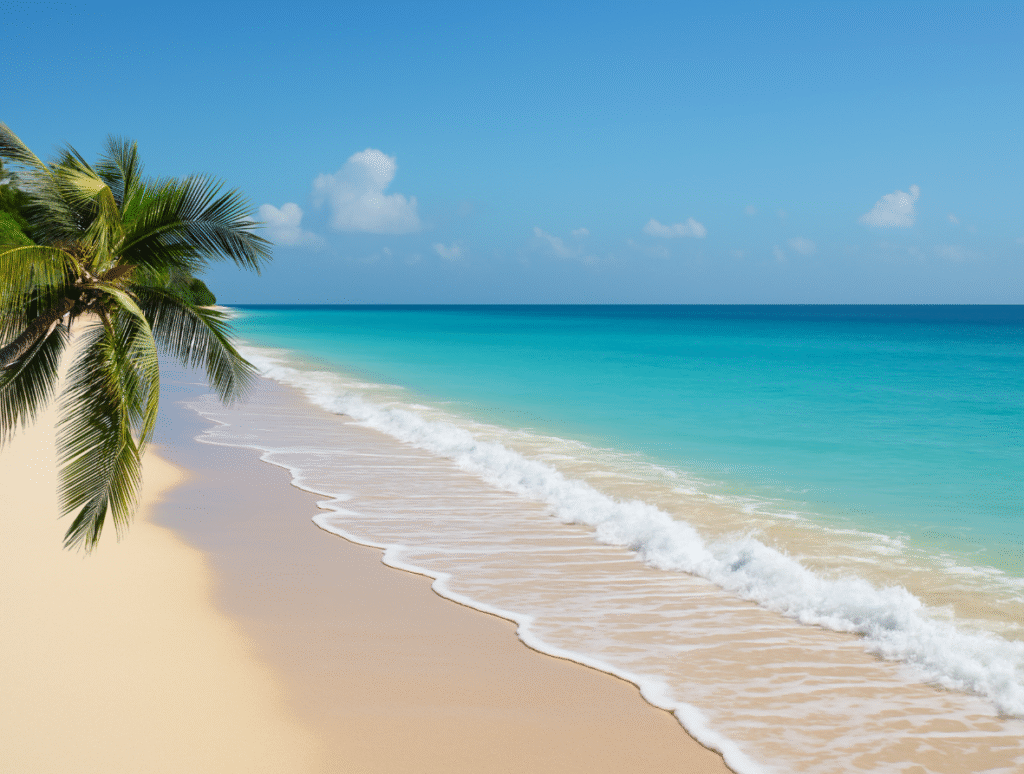Playa Blanca is one of the most captivating beach destinations in Colombia. Located on the Barú Peninsula just southwest of Cartagena, it has become increasingly popular with both Colombian locals and international travelers looking for a Caribbean escape. Known for its white sands, turquoise waters and a more rustic atmosphere than the luxury resorts of other coastal spots, Playa Blanca offers a unique experience for those willing to trade convenience for charm.
Getting to Playa Blanca
Karu from Colombia describing Playa Blanca
Traveling to Playa Blanca is part of the adventure. The beach is accessible from Cartagena by boat, bus, or a combination of transport options. Many tourists opt for a boat ride from the port area of Cartagena which takes about 45 minutes and offers scenic views of the Caribbean Sea. Others choose to take a taxi or bus to Pasacaballos and then cross the Canal del Dique on a ferry before continuing by road to Barú.
Though the journey can be slightly challenging, especially for first-time visitors, it adds to the allure of Playa Blanca. Those seeking an off-the-beaten-path experience will find the trip worthwhile. It is recommended to plan ahead, particularly for return transportation, as options can become limited in the late afternoon.
The beach experience

Playa Blanca’s shoreline stretches for several kilometers, lined with palm trees, beach bars and small wooden hostels. The sand is soft and bright, often appearing almost white under the Caribbean sun, while the water is clear and warm, perfect for swimming and snorkeling. Unlike resort-managed beaches, Playa Blanca maintains a more natural and untouched appearance.
Vendors walk along the beach offering everything from fresh mango slices and grilled fish to artisanal jewelry and massages. While this can be overwhelming to some, others see it as part of the local culture and charm. Visitors who want a more relaxed time often walk a bit further along the beach to find quieter spots beyond the main crowd.
Accommodation and amenities
Staying overnight at Playa Blanca is an option for those who want to experience the beach beyond a day trip. Accommodations range from basic hammocks under thatched roofs to small eco-hotels with private rooms. Most places do not offer luxury services, and amenities like electricity and running water can be limited or available only at certain times of the day.
What Playa Blanca lacks in luxury it makes up for in atmosphere. Falling asleep to the sound of waves and waking up to the sunrise over the sea provides a peaceful contrast to the busy streets of Cartagena. Some hostels and cabins offer meals included with lodging, often based on local seafood dishes such as fried fish with coconut rice and plantains.
Environmental concerns and preservation
Playa Blanca’s rise in popularity has not come without challenges. Increased tourism has led to environmental stress on the beach’s ecosystem. Litter, overdevelopment and inadequate waste management have become growing concerns. There are ongoing efforts by local organizations and activists to promote sustainable tourism and educate visitors about the impact of their activities.
Travelers are encouraged to bring reusable water bottles, carry their trash out, and avoid participating in harmful practices such as feeding wildlife or using single-use plastics. Responsible tourism can help preserve the natural beauty of Playa Blanca for future generations.
Local culture and interaction
The community around Playa Blanca consists of local residents who have lived in the area long before tourism became widespread. Many families depend on tourism for their income, operating small businesses, cooking meals, guiding tours or renting out rooms. Engaging respectfully with the local people enhances the travel experience and supports the economy directly.
While English is spoken by some, especially those who work with tourists, most residents speak only Spanish. Learning a few basic phrases can go a long way in building rapport and navigating the area more smoothly.
Activities beyond the beach
While the beach is the main attraction, there are additional activities to explore near Playa Blanca. Boat tours can take visitors to nearby islands, such as the Rosario Islands, where coral reefs and marine life provide excellent snorkeling and diving opportunities. Bioluminescent plankton tours at night offer a surreal experience as the water glows with movement, a natural phenomenon that fascinates travelers.
Some visitors also explore the mangroves and small inland lagoons that are home to unique bird species and wildlife. These excursions are typically organized by local guides who share knowledge of the area’s flora, fauna and history.
When to visit Playa Blanca
The best time to visit Playa Blanca is during the dry season from December to April when the weather is sunny and the sea is calm. This period also coincides with high tourism months, so the beach tends to be more crowded. The rainy season, from May to November, brings fewer visitors and more affordable prices but also a higher chance of storms and rough sea conditions.
Regardless of the season, early morning visits allow for a more serene experience before tour groups arrive. Spending the night also provides a more tranquil perspective of the beach once the day visitors leave.